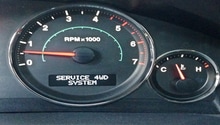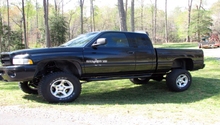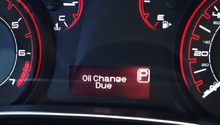Dodge Ram: Warning Lights
Nothing is worse than a warning sign that flashes on your dashboard indicating that some component is out of whack with your truck's major system(s). Learn what these warning lights mean and what you should do once they appear on your dashboard.
This article applies to the Dodge Ram (1994-present).
A warning sign is there to grab your attention. But more than alert you to the fact that a malfunctioning component could be throwing one or more of your truck's major systems into trouble, warning signs are there to advise you as to the best possible solution to your problem. The culprit could be a bad fluid that is contaminated with dirt, or a sensor that is broken. Whatever it is, you now know that something is awry and can spring into action to fix it. If you ever are unsure what a warning light means, you can always check your owner's manual or read your truck's trouble codes for an exact indication of the problem. Let's go over the most important warning lights you'll need to know about to maintain the health of your Dodge Ram 1500 through the years.
Warning Lights
Anti-Lock Braking System (ABS)
This light can appear independently on your dashboard or in combination with other warning lights, such as the brake warning light and the "Service 4WD" warning light. The culprit could be a poor ABS sensor connection or some other type of fault with your ABS system. If you are skilled in wiring and sensor replacement, you could diagnose and repair the issue on your own, but first you would need to start by inspecting your entire brake system. Otherwise, leave a job this complicated to the professionals.

Brake Light
First things first, check your emergency brake. It might be engaged. Apply and release the brake several times to ensure it is not sticking, and then release it. If this doesn't fix the problem, head to your local Chrysler Dodge dealership. Have the dealer check your brake fluid and hydraulic fluid, as well as check the heath of your overall system.

Service 4WD
If this warning light illuminates on your dashboard, you may need to visit a certified mechanic; however, not necessarily. If you haven't switched your Dodge Ram pickup truck into 4WD in some time, say several weeks, the issue is most likely your power train responding to the change in drive and won't require a trip down to your local dealership. Drive your pickup truck for several miles without switching back into 2WD and the warning light should go away automatically. If it does not, read your trouble codes using an on-board diagnostic tool, if you own one. Your other option is to make a service appointment for an inspection of your truck.

Check Engine Light
This light can illuminate in your Dodge Ram 1500 for a variety of reasons. The likely culprit is engine or transmission failure; however, a loose fuel cap or faulty spark plugs could also trigger this warning light. Have your vehicle serviced immediately, particularly if it is time once again for your engine oil and filter to be replaced. Disconnect your battery for several minutes. After re-installing the battery, crank the engine and check to see if the warning light returns. If it does, immediate repair work is required. If the issue is triggered by a smaller problem that has not yet triggered a trouble code (but most likely will while you are out on the road), the warning light will remain off for the time being. It's best not to drive when dealing with possible engine failure.

Scheduled Maintenance
To maintain the health of your Dodge Ram 1500, you'll need to follow your general maintenance schedule as well as keep an eye and an ear out for any indications of a malfunctioning component, such as a squealing noise or smoke, for example. Make sure to have your engine oil replaced every 3,000 miles and your engine filters replaced every 12,000 to 15,000 miles. It's always recommended that you have your spark plugs replaced every 30,000 miles.
Common Questions
Why did all of my brake system warning lights appear on the dashboard simultaneously?
The culprit could be a number of issues, including a bad wheel sensor, which might also be simultaneously triggering your tire warning light to come on, so check for that. As well, a faulty connection between the wires that connect to the wheel system could be explained by a recent modification to your rims, or the fuse to your anti-lock brake system could be blown. It's recommended that you pull the fuse and check for signs of damage before heading down to your local dealership.
How do I identify the tire pressure warning light?
The tire pressure warning light is shaped like a horseshoe and is yellow in color. It is characterized by a yellow exclamation point in the center. If this light appears on your dashboard, it means the pressure in one or more of your tires is either too low or too high and needs to be adjusted. Head to your local gas station to check your tire pressure using the free tire pressure gauge. As seasonal changes occur, you will need to adjust the level of air in your tires. The issue could also be a malfunctioning pressure sensor, which cost around $170 per unit to repair professionally.
Related Discussions
- Bad Wheel Sensor - Dodgeforum.com
- Tire Warning Light - Dodgeforum.com
- Faulty ABS- Dodgeforum.com






